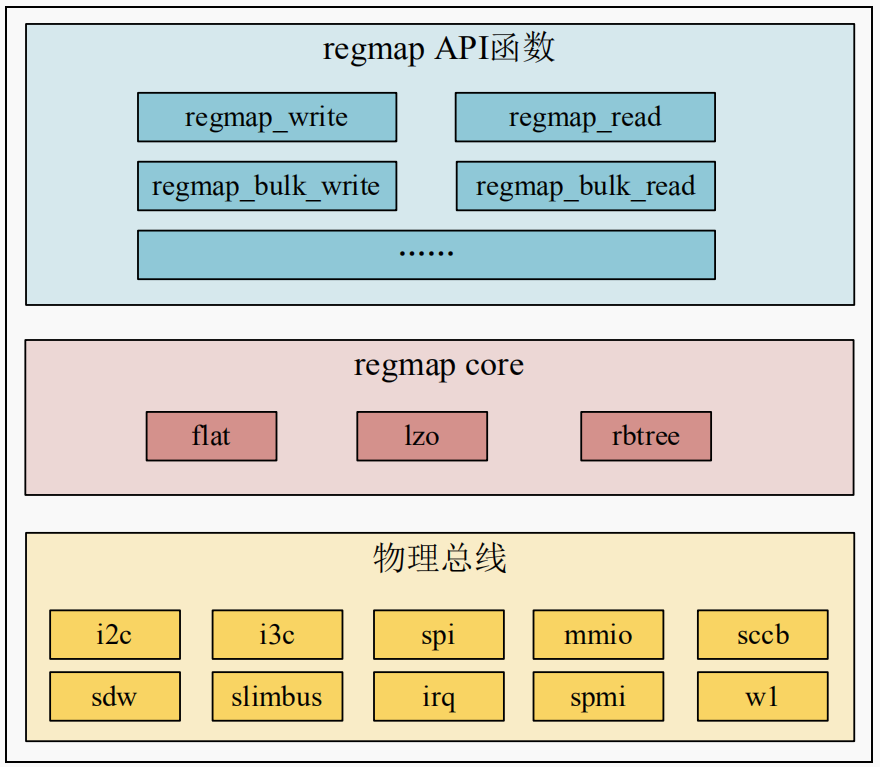一、 前言
Linux加密框架是内核安全子系统的重要组成部份,同时,它又一个的独立子系统形式出现,从它出现在内核根目录下的crypto/就可以看出其地位了。
Crypto实现较为复杂,其主要体现在其OOP的设计思路和高度的对像抽像与封装模型,作者展现了其出色的架构设计水准和面向对像的抽像能力。本文力图从加密框架的重要应用,即IPSec(xfrm)的两个重要协议AH和ESP对加密框架的使用,展现其设计与实现。
内核版本:2.6.31.13
二、 算法模版
1. 模版的基本概念
算法模版是加密框架的第一个重要概念。内核中有很多算法是动态生成的,例如cbc(des)算法。内核并不存在这样的算法,它事实上是cbc和des的组合,但是内核加密框架从统一抽像管理的角度。将cbc(des)看做一个算法,在实际使用时动态分配并向内核注册该算法。这样,可以将cbc抽像为一个模版,它可以同任意的加密算法进行组合。算法模版使用结构crypto_template来描述,其结构原型:
点击(此处)折叠或打开
struct crypto_template {
struct list_head list; //模版链表成员,用于注册
struct hlist_head instances; //算法实例链表首部
struct module *module; //模块指针
struct crypto_instance *(*alloc)(struct rtattr **tb); //算法实例分配
void (*free)(struct crypto_instance *inst); //算法实例释放
char name[CRYPTO_MAX_ALG_NAME]; //模版名称
};
例如,一个名为cbc的算法模版,可以用它来动态分配cbc(des),cbc(twofish)……诸如此类。
crypto/algapi.c下包含了模版的一些常用操作。最为常见的就是模版的注册与注销,其实质是对以crypto_template_list为首的链表的操作过程:
点击(此处)折叠或打开
static LIST_HEAD(crypto_template_list);
int crypto_register_template(struct crypto_template *tmpl)
{
struct crypto_template *q;
int err = -EEXIST;
down_write(&crypto_alg_sem);
//遍历crypto_template_list,看当前模板是否被注册
list_for_each_entry(q, &crypto_template_list, list) {
if (q == tmpl)
goto out;
}
//注册之
list_add(&tmpl->list, &crypto_template_list);
//事件通告
crypto_notify(CRYPTO_MSG_TMPL_REGISTER, tmpl);
err = 0;
out:
up_write(&crypto_alg_sem);
return err;
}
EXPORT_SYMBOL_GPL(crypto_register_template);
注销算法模版,除了模版本身,还有一个重要的内容是处理算法模版产生的算法实例,关于算法实例,后文详述。
点击(此处)折叠或打开
void crypto_unregister_template(struct crypto_template *tmpl)
{
struct crypto_instance *inst;
struct hlist_node *p, *n;
struct hlist_head *list;
LIST_HEAD(users);
down_write(&crypto_alg_sem);
BUG_ON(list_empty(&tmpl->list));
//注销算法模版,并重新初始化模版的list成员
list_del_init(&tmpl->list);
//首先移除模版上的所有算法实例
list = &tmpl->instances;
hlist_for_each_entry(inst, p, list, list) {
int err = crypto_remove_alg(&inst->alg, &users);
BUG_ON(err);
}
crypto_notify(CRYPTO_MSG_TMPL_UNREGISTER, tmpl);
up_write(&crypto_alg_sem);
//释放模版的所有算法实例分配的内存
hlist_for_each_entry_safe(inst, p, n, list, list) {
BUG_ON(atomic_read(&inst->alg.cra_refcnt) != 1);
tmpl->free(inst);
}
crypto_remove_final(&users);
}
EXPORT_SYMBOL_GPL(crypto_unregister_template);
2. 算法模版的查找
点击(此处)折叠或打开
crypto_lookup_template函数根据名称,查找相应的模版:
struct crypto_template *crypto_lookup_template(const char *name)
{
return try_then_request_module(__crypto_lookup_template(name), name);
}
__crypto_lookup_template完成实质的模版模找工作,而try_then_request_module则尝试动态插入相应的内核模块,如果需要的话:
点击(此处)折叠或打开
static struct crypto_template *__crypto_lookup_template(const char *name)
{
struct crypto_template *q, *tmpl = NULL;
down_read(&crypto_alg_sem);
//遍历crypto_template_list链,匹备模版名称
list_for_each_entry(q, &crypto_template_list, list) {
if (strcmp(q->name, name))
continue;
//查找命中,需要对其增加引用,以防止其正在使用时,模块被卸载。完成该操作后返回查找到的模版
if (unlikely(!crypto_tmpl_get(q)))
continue;
tmpl = q;
break;
}
up_read(&crypto_alg_sem);
return tmpl;
}
3. 模版的算法实例分配时机
模版可以看做一个静态的概念,其只有被动态创建后才具有生命力,本文将模版通过alloc分配创建的算法(对像)称为“实例(instance)”。
算法模版的核心作用是,上层调用者构造一个完整合法的算法名称,如hmac(md5),触发模版的alloc动作,为该名称分配一个算法实例,类似于为类实例化一个对像,最终的目的还是使用算法本身。对于xfrm来说,一个典型的算法模版的实例分配触发流程如下所述:
xfrm包裹了一层加密框架支持,参后文“ xfrm加密框架”一节,其算法查找函数为xfrm_find_algo,它调用crypto_has_alg函数进行算法的查找,以验证自己支持的算法是否被内核支持,如xfrm支持cbc(des),但此时并不知道内核是否有这个算法(如果该算法首次被使用,则还没有分配算法实例)。crypto_has_alg会调用crypto_alg_mod_lookup完成查找工作,crypto_alg_mod_lookup函数查找不命中,会调用crypto_probing_notify函数进行请求探测:
点击(此处)折叠或打开
struct crypto_alg *crypto_alg_mod_lookup(const char *name, u32 type, u32 mask)
{
……
ok = crypto_probing_notify(CRYPTO_MSG_ALG_REQUEST, larval);
……
}
请求是通过通知链表来通告的:
点击(此处)折叠或打开
int crypto_probing_notify(unsigned long val, void *v)
{
int ok;
ok = blocking_notifier_call_chain(&crypto_chain, val, v);
if (ok == NOTIFY_DONE) {
request_module("cryptomgr");
ok = blocking_notifier_call_chain(&crypto_chain, val, v);
}
return ok;
}
在algboss.c中注册了一个名为cryptomgr_notifier的通告块结构,其通告处理函数为cryptomgr_notify
点击(此处)折叠或打开
static struct notifier_block cryptomgr_notifier = {
.notifier_call = cryptomgr_notify,
};
static int __init cryptomgr_init(void)
{
return crypto_register_notifier(&cryptomgr_notifier);
}
static void __exit cryptomgr_exit(void)
{
int err = crypto_unregister_notifier(&cryptomgr_notifier);
BUG_ON(err);
}
这样,当有算法被使用的时候,会调用通告块的处理函数cryptomgr_notify,因为此时的消息是CRYPTO_MSG_ALG_REQUEST,所以cryptomgr_schedule_probe进行算法的探测:
点击(此处)折叠或打开
static int cryptomgr_notify(struct notifier_block *this, unsigned long msg,
void *data)
{
switch (msg) {
case CRYPTO_MSG_ALG_REQUEST:
return cryptomgr_schedule_probe(data);
……
return NOTIFY_DONE;
}
cryptomgr_schedule_probe启动一个名为cryptomgr_probe的内核线程来进行算法模版的探测:
点击(此处)折叠或打开
static int cryptomgr_schedule_probe(struct crypto_larval *larval)
{
……
//构造param,以供后面使用
……
thread = kthread_run(cryptomgr_probe, param, "cryptomgr_probe");
……
}
cryptomgr_probe完成具体的算法探测过程:
点击(此处)折叠或打开
static int cryptomgr_probe(void *data)
{
struct cryptomgr_param *param = data;
struct crypto_template *tmpl;
struct crypto_instance *inst;
int err;
//查找算法模版
tmpl = crypto_lookup_template(param->template);
if (!tmpl)
goto err;
//循环调用模版的alloc函数分配算法实列,并将模版注册之
//这里值得注意的是循环的条件,当返回码为-EAGAIN时,会循环再次尝试
//这样使用的一个场景后面会分析到
do {
inst = tmpl->alloc(param->tb);
if (IS_ERR(inst))
err = PTR_ERR(inst);
else if ((err = crypto_register_instance(tmpl, inst)))
tmpl->free(inst);
} while (err == -EAGAIN && !signal_pending(current));
//查找中会增加引用,这里已经用完了释放之
crypto_tmpl_put(tmpl);
if (err)
goto err;
out:
kfree(param);
module_put_and_exit(0);
err:
crypto_larval_error(param->larval, param->otype, param->omask);
goto out;
}
理解了算法的注册与查找后,再来理解这个函数就非常容易了,其核心在do{}while循环中,包含了算法实例的分配和注册动作。针对每一种算法模版,其alloc动作不尽一致。后文会对xfrm使用的算法模版一一阐述。
为什么不把“算法实例”直接称之为“算法”,这是因为实例包含了更多的内容,其由结构struct crypto_instance可以看出:
点击(此处)折叠或打开
struct crypto_instance {
struct crypto_alg alg; //对应的算法名称
struct crypto_template *tmpl; //所属的算法模版
struct hlist_node list; //链表成员
void *__ctx[] CRYPTO_MINALIGN_ATTR; //上下文信息指针
};
内核使用struct crypto_alg描述一个算法(该结构在后文使用时再来分析),可见一个算法实例除了包含其对应的算法,还包含更多的内容。
当分配成功后,cryptomgr_probe会调用crypto_register_instance将其注册,以期将来可以顺利地找到并使用它:
点击(此处)折叠或打开
int crypto_register_instance(struct crypto_template *tmpl,
struct crypto_instance *inst)
{
struct crypto_larval *larval;
int err;
//对算法进行合法性检查,并构造完整的驱动名称
err = crypto_check_alg(&inst->alg);
if (err)
goto err;
//设置算法内核模块指针指向所属模版
inst->alg.cra_module = tmpl->module;
down_write(&crypto_alg_sem);
//注册算法实例对应的算法
larval = __crypto_register_alg(&inst->alg);
if (IS_ERR(larval))
goto unlock;
//成功后,将算法再注册到所属的模版上面
hlist_add_head(&inst->list, &tmpl->instances);
//设置模版指针
inst->tmpl = tmpl;
unlock:
up_write(&crypto_alg_sem);
err = PTR_ERR(larval);
if (IS_ERR(larval))
goto err;
crypto_wait_for_test(larval);
err = 0;
err:
return err;
}
注册的一个重要工作,就是调用__crypto_register_alg将实例所对应的算法注册到加密框架子系统中。算法注册成功后,上层调用者就可以调用crypto_alg_mod_lookup等函数进行查找,并使用该算法了。
三、 HMAC
MAC(消息认证码)与hash函数非常相似,只是生成固定长度的消息摘要时需要秘密的密钥而已。
HAMC是密钥相关的哈希运算消息认证码(keyed-Hash Message Authentication Code),HMAC运算利用哈希算法,以一个密钥和一个消息为输入,生成一个消息摘要作为输出。具体的算法描述详见:http://baike.baidu.com/view/1136366.htm?fr=ala0_1。
根据HMAC的特点(可以和类似md5、sha等hash算法组合,构造出hmac(md5)这样的算法),Linux 加密框架将其抽像为一个算法模版。本章将假设上层调用者使用了名为hmac(md5)的算法,展示这一算法是如何被构造、初始化及调用以实现数据验证的。
1. 算法模版的注册与注销
点击(此处)折叠或打开
static struct crypto_template hmac_tmpl = {
.name = "hmac",
.alloc = hmac_alloc,
.free = hmac_free,
.module = THIS_MODULE,
};
点击(此处)折叠或打开
static int __init hmac_module_init(void)
{
return crypto_register_template(&hmac_tmpl);
}
点击(此处)折叠或打开
static void __exit hmac_module_exit(void)
{
crypto_unregister_template(&hmac_tmpl);
}
模版的注册与注销前文已经描述过了。
2. 算法实例的分配
当一个算法需要被使用却查找不到的时候,会尝试调用其模版对应分配相应的算法实列,这也适用于hmac,其alloc函数指针指向hmac_alloc:
点击(此处)折叠或打开
static struct crypto_instance * hmac_alloc (struct rtattr **tb)
{
struct crypto_instance *inst;
struct crypto_alg *alg;
int err;
int ds;
//类型检查,所属算法必需为hash类型
err = crypto_check_attr_type(tb, CRYPTO_ALG_TYPE_HASH);
if (err)
return ERR_PTR(err);
//根据参数名称,查找相应的子算法,如md5,shax等
alg = crypto_get_attr_alg(tb, CRYPTO_ALG_TYPE_HASH,
CRYPTO_ALG_TYPE_HASH_MASK);
//查找失败
if (IS_ERR(alg))
return ERR_CAST(alg);
//初始化算法实例
inst = ERR_PTR(-EINVAL);
//计算算法实列的消息摘要大小(输出大小)
ds = alg->cra_type == &crypto_hash_type ?
alg->cra_hash.digestsize :
alg->cra_type ?
__crypto_shash_alg(alg)->digestsize :
alg->cra_digest.dia_digestsize;
if (ds > alg->cra_blocksize)
goto out_put_alg;
//分配一个算法实列,这样,一个新的算法,如hmac(md5)就横空出世了
inst = crypto_alloc_instance("hmac", alg);
//分配失败
if (IS_ERR(inst))
goto out_put_alg;
//初始化算法实例,其相应的成员等于其子算法中的对应成员
//类型
inst->alg.cra_flags = CRYPTO_ALG_TYPE_HASH;
//优先级
inst->alg.cra_priority = alg->cra_priority;
//计算消息摘要的块长度(输入大小)
inst->alg.cra_blocksize = alg->cra_blocksize;
//对齐掩码
inst->alg.cra_alignmask = alg->cra_alignmask;
//类型指针指向crypto_hash_type
inst->alg.cra_type = &crypto_hash_type;
//消息摘要大小
inst->alg.cra_hash.digestsize = ds;
//计算算法所需的上下文空间大小
inst->alg.cra_ctxsize = sizeof(struct hmac_ctx) +
ALIGN(inst->alg.cra_blocksize * 2 + ds,
sizeof(void *));
//初始化和退出函数
inst->alg.cra_init = hmac_init_tfm;
inst->alg.cra_exit = hmac_exit_tfm;
//置相应hash算法的操作函数,包含hash函数标准的init/update/final和digest/setkey
inst->alg.cra_hash.init = hmac_init;
inst->alg.cra_hash.update = hmac_update;
inst->alg.cra_hash.final = hmac_final;
//消息摘要函数
inst->alg.cra_hash.digest = hmac_digest;
//setkey(密钥设置函数)
inst->alg.cra_hash.setkey = hmac_setkey;
out_put_alg:
crypto_mod_put(alg);
return inst;
}
每个模版的alloc动作虽不同,但是它们基本上遵循一些共性的操作:
1、 合法性检验,如类型检查;
2、 取得其子算法(即被模版所包裹的算法,如hmac(md5)中,就是md5)的算法指针;
3、 调用crypto_alloc_instance分配一个相应的算法实列;
4、 对分配成功的算法实例进行实始化,这也是理解该算法实例最核心的部份,因为它初始化算法运行所需的一些必要参数和虚函数指针;
crypto_alloc_instance(algapi.c) 函数用于分配一个算法实例,这个函数有两个重要功能,一个是分配内存空间,另一个是初始化spawn。
点击(此处)折叠或打开
//name: 模版名称
//alg:模版的子算法
struct crypto_instance *crypto_alloc_instance(const char *name,
struct crypto_alg *alg)
{
struct crypto_instance *inst;
struct crypto_spawn *spawn;
int err;
//分配一个算法实例,crypto_instance结构的最后一个成员ctx是一个指针变量,所以,在分配空间的时候,在其尾部追加相应的空间,可以使用ctx访问之。
//另一个重要的概念是,算法实例中包含了算法,这个分配,同时也完成了算法实例对应的算法的分配工作。
inst = kzalloc(sizeof(*inst) + sizeof(*spawn), GFP_KERNEL);
if (!inst)
return ERR_PTR(-ENOMEM);
err = -ENAMETOOLONG;
//构造完成的算法名称
if (snprintf(inst->alg.cra_name, CRYPTO_MAX_ALG_NAME, "%s(%s)", name,
alg->cra_name) >= CRYPTO_MAX_ALG_NAME)
goto err_free_inst;
//构造完整的算法驱动名称
if (snprintf(inst->alg.cra_driver_name, CRYPTO_MAX_ALG_NAME, "%s(%s)",
name, alg->cra_driver_name) >= CRYPTO_MAX_ALG_NAME)
goto err_free_inst;
//spawn指向算法实例的上下文成员,可以这样做是因为__ctx是一个可变长的成员,在分配实例的时候,
//在尾部增加了一个spawn的空间
spawn = crypto_instance_ctx(inst);
//初始化spawn
err = crypto_init_spawn(spawn, alg, inst,
CRYPTO_ALG_TYPE_MASK | CRYPTO_ALG_ASYNC);
if (err)
goto err_free_inst;
return inst;
err_free_inst:
kfree(inst);
return ERR_PTR(err);
}
crypto_instance_ctx取出算法实例的ctx指针,返回值是void *,这意味着可以根具不同的需要,将其转换为所需的类型:
点击(此处)折叠或打开
static inline void *crypto_instance_ctx(struct crypto_instance *inst)
{
return inst->__ctx;
}
一个算法实例被分配成员后,其会被注册至加密子系统,这样,一个算法,例如,hmac(md5)就可以直接被使用了。
3. 待孵化的卵
已经看到了从模版到算法实例的第一层抽像,每个算法在每一次被使用时,它们的运行环境不尽相同,例如,可能会拥有不同的密钥。将算法看成一个类,则在每一次运行调用时,需要为它产生一个“对像”,这在内核中被称为transform,简称为tfm。后文会详细看到分配一个tfm的过程,现在引入这一概念,主要是为了分析spawn。
加密或认证算法,在调用时,都需要分配其算法对应的tfm,在分配算法实例的同时,并没有为之分配相应的tfm结构,这是因为真正的算法还没有被调用,这并不是进行tfm结构分配的最佳地点。在初始化算法实例的时候,加密框架使用了XXX_spawn_XXX函数簇来解决这一问题。这样的算法对像,被称为spawn(卵)。也就是说,在算法实例分配的时候,只是下了一个蛋(设置好spawn),等到合适的时候来对其进行孵化,这个“合适的时候”,通常指为调用算法实际使用的时候。
在crypto_alloc_instance分配算法实例的时候,就顺便分配了spawn,然后调用crypto_init_spawn对其进行初始化:
点击(此处)折叠或打开
int crypto_init_spawn(struct crypto_spawn *spawn, struct crypto_alg *alg,
struct crypto_instance *inst, u32 mask)
{
int err = -EAGAIN;
//初始化其成员
spawn->inst = inst;
spawn->mask = mask;
down_write(&crypto_alg_sem);
if (!crypto_is_moribund(alg)) {
//加入链表,每个spawn,都被加入到算法的cra_users链,即算做算法的一个用户
list_add(&spawn->list, &alg->cra_users);
//spawn的alg成员指针指向当前成员,这就方便引用了
spawn->alg = alg;
err = 0;
}
up_write(&crypto_alg_sem);
return err;
}
所以,所谓算法的spawn的初始化,就是初始化crypto_spawn结构,核心的操作是设置其对应的算法实例、算法,以及一个加入算法的链表的过程。
4. 算法的初始化
有了算法实例,仅表示内核拥有这一种“算法”——加引号的意思是说,它可能并不以类似md5.c这样的源代码形式存现,而是通过模版动态创建的。实际要使用该算法,需要为算法分配“运行的对像”,即tfm。
4.1 tfm
内核加密框架中,使用结构crypto_alg来描述一个算法,每一个算法(实例)相当于一个类,在实际的使用环境中,需要为它分配一个对像,在内核加密框架中,这个“对像”被称为transform(简称tfm)。transform意味“变换”,可能译为“蜕变”更为合适。作者对它的注释是:
/*
* Transforms: user-instantiated objects which encapsulate algorithms
* and core processing logic. Managed via crypto_alloc_*() and
* crypto_free_*(), as well as the various helpers below.
……
*/
tfm是加密框架中一个极为重要的概念,它由结构crypto_tfm描述:
点击(此处)折叠或打开
struct crypto_tfm {
u32 crt_flags;
union {
struct ablkcipher_tfm ablkcipher;
struct aead_tfm aead;
struct blkcipher_tfm blkcipher;
struct cipher_tfm cipher;
struct hash_tfm hash;
struct ahash_tfm ahash;
struct compress_tfm compress;
struct rng_tfm rng;
} crt_u;
void (*exit)(struct crypto_tfm *tfm);
struct crypto_alg *__crt_alg;
void *__crt_ctx[] CRYPTO_MINALIGN_ATTR;
};
这些成员的作用,将在后面一一看到,值得注意的是,针对每种算法不同,结构定义了一个名为crt_u的联合体,以对应每种算法的tfm的具体操作,例如加密/解密,求hash,压缩/解压等,加密框架引入了一组名为xxx_tfm的结构封装,xxx表示算法类型,也就是crt_u成员。其定义如下:
点击(此处)折叠或打开
struct ablkcipher_tfm {
int (*setkey)(struct crypto_ablkcipher *tfm, const u8 *key,
unsigned int keylen);
int (*encrypt)(struct ablkcipher_request *req);
int (*decrypt)(struct ablkcipher_request *req);
int (*givencrypt)(struct skcipher_givcrypt_request *req);
int (*givdecrypt)(struct skcipher_givcrypt_request *req);
struct crypto_ablkcipher *base;
unsigned int ivsize;
unsigned int reqsize;
};
struct aead_tfm {
int (*setkey)(struct crypto_aead *tfm, const u8 *key,
unsigned int keylen);
int (*encrypt)(struct aead_request *req);
int (*decrypt)(struct aead_request *req);
int (*givencrypt)(struct aead_givcrypt_request *req);
int (*givdecrypt)(struct aead_givcrypt_request *req);
struct crypto_aead *base;
unsigned int ivsize;
unsigned int authsize;
unsigned int reqsize;
};
struct blkcipher_tfm {
void *iv;
int (*setkey)(struct crypto_tfm *tfm, const u8 *key,
unsigned int keylen);
int (*encrypt)(struct blkcipher_desc *desc, struct scatterlist *dst,
struct scatterlist *src, unsigned int nbytes);
int (*decrypt)(struct blkcipher_desc *desc, struct scatterlist *dst,
struct scatterlist *src, unsigned int nbytes);
};
struct cipher_tfm {
int (*cit_setkey)(struct crypto_tfm *tfm,
const u8 *key, unsigned int keylen);
void (*cit_encrypt_one)(struct crypto_tfm *tfm, u8 *dst, const u8 *src);
void (*cit_decrypt_one)(struct crypto_tfm *tfm, u8 *dst, const u8 *src);
};
struct hash_tfm {
int (*init)(struct hash_desc *desc);
int (*update)(struct hash_desc *desc,
struct scatterlist *sg, unsigned int nsg);
int (*final)(struct hash_desc *desc, u8 *out);
int (*digest)(struct hash_desc *desc, struct scatterlist *sg,
unsigned int nsg, u8 *out);
int (*setkey)(struct crypto_hash *tfm, const u8 *key,
unsigned int keylen);
unsigned int digestsize;
};
struct ahash_tfm {
int (*init)(struct ahash_request *req);
int (*update)(struct ahash_request *req);
int (*final)(struct ahash_request *req);
int (*digest)(struct ahash_request *req);
int (*setkey)(struct crypto_ahash *tfm, const u8 *key,
unsigned int keylen);
unsigned int digestsize;
unsigned int reqsize;
};
struct compress_tfm {
int (*cot_compress)(struct crypto_tfm *tfm,
const u8 *src, unsigned int slen,
u8 *dst, unsigned int *dlen);
int (*cot_decompress)(struct crypto_tfm *tfm,
const u8 *src, unsigned int slen,
u8 *dst, unsigned int *dlen);
};
struct rng_tfm {
int (*rng_gen_random)(struct crypto_rng *tfm, u8 *rdata,
unsigned int dlen);
int (*rng_reset)(struct crypto_rng *tfm, u8 *seed, unsigned int slen);
};
为了直接访问这些成员,定义了如下宏:
点击(此处)折叠或打开
#define crt_ablkcipher crt_u.ablkcipher
#define crt_aead crt_u.aead
#define crt_blkcipher crt_u.blkcipher
#define crt_cipher crt_u.cipher
#define crt_hash crt_u.hash
#define crt_ahash crt_u.ahash
#define crt_compress crt_u.compress
#define crt_rng crt_u.rng
这样,要访问hash算法的hash成员,就可以直接使用crt_hash,而不是crt_u.hash。
每种算法访问tfm都使用了二次封装,例如:
点击(此处)折叠或打开
struct crypto_ablkcipher {
struct crypto_tfm base;
};
struct crypto_aead {
struct crypto_tfm base;
};
struct crypto_blkcipher {
struct crypto_tfm base;
};
struct crypto_cipher {
struct crypto_tfm base;
};
struct crypto_comp {
struct crypto_tfm base;
};
struct crypto_hash {
struct crypto_tfm base;
};
struct crypto_rng {
struct crypto_tfm base;
};
其base成员就是相应算法的tfm。因为它们拥有相应的起始地址,可以很方便地强制类型转换来操作,内核为此专门定义了一组函数,以hash为例,完成这一工作的是crypto_hash_cast:
点击(此处)折叠或打开
static inline struct crypto_hash *__crypto_hash_cast(struct crypto_tfm *tfm)
{
return (struct crypto_hash *)tfm;
}
static inline struct crypto_hash *crypto_hash_cast(struct crypto_tfm *tfm)
{
BUG_ON((crypto_tfm_alg_type(tfm) ^ CRYPTO_ALG_TYPE_HASH) &
CRYPTO_ALG_TYPE_HASH_MASK);
return __crypto_hash_cast(tfm);
}
当然,针对各种不同的算法,还有许多不同的XXX_cast函数。这些cast函数,将tfm强制转换为其所属的算法类型的封装结构。
4.2 tfm的分配
对于算法的实始化,其核心功能就是分配一个tfm,并设置其上下文环境,例如密钥等参数,然后初始化上述struct xxx_tfm结构。对于hash类的算法来讲,分配tfm是由crypto_alloc_hash(crypt.h) 这个API来完成的,以AH为例,在其初始化过程中有:
点击(此处)折叠或打开
static int ah_init_state(struct xfrm_state *x)
{
struct crypto_hash *tfm;
……
tfm = crypto_alloc_hash(x->aalg->alg_name, 0, CRYPTO_ALG_ASYNC);
if (IS_ERR(tfm))
goto error;
……
}
AH调用crypto_alloc_hash为SA中指定的算法(如hmac(md5))分配一个tfm,第二个参数为0,第三个参数指明了AH使用异步模式。
点击(此处)折叠或打开
static inline struct crypto_hash *crypto_alloc_hash(const char *alg_name,
u32 type, u32 mask)
{
//初始化相应的类型的掩码
type &= ~CRYPTO_ALG_TYPE_MASK; //清除类型的CRYPTO_ALG_TYPE_MASK位
mask &= ~CRYPTO_ALG_TYPE_MASK; //清除掩码的CRYPTO_ALG_TYPE_MASK位
type |= CRYPTO_ALG_TYPE_HASH; //置类型CRYPTO_ALG_TYPE_HASH位
mask |= CRYPTO_ALG_TYPE_HASH_MASK; //置掩码CRYPTO_ALG_TYPE_HASH_MASK位
//最终的分配函数是crypto_alloc_base,它分配一个base(每个算法的tfm),再将其强制类型转换为所需要结构类型
return __crypto_hash_cast(crypto_alloc_base(alg_name, type, mask));
}
crypto_alloc_base首先检查相应的算法是否存在,对于hmac(md5)这个例子,xfrm在SA的增加中,会触发相应的算法查找,最终会调用hmac模版的alloc分配算法实例(当然也包括算法本身),然后向内核注册算法及算法实例,所以,查找会命中。接下来的工作,是调用tfm的核心分配函数__crypto_alloc_tfm进行分配,其实现如下:
点击(此处)折叠或打开
struct crypto_tfm *crypto_alloc_base(const char *alg_name, u32 type, u32 mask)
{
struct crypto_tfm *tfm;
int err;
for (;;) {
struct crypto_alg *alg;
//根据算法名称,查找相应的算法,它会首先尝试已经加载的算法,如果失败,也会尝试
//动态插入内核模块
alg = crypto_alg_mod_lookup(alg_name, type, mask);
//查找失败,返回退出循环
if (IS_ERR(alg)) {
err = PTR_ERR(alg);
goto err;
}
//查找成功,为算法分配tfm
tfm = __crypto_alloc_tfm(alg, type, mask);
//分配成功,返回之
if (!IS_ERR(tfm))
return tfm;
//释放引用计算,因为查找会增加引用
crypto_mod_put(alg);
//获取返回错误值,根据其值,决定是否要继续尝试
err = PTR_ERR(tfm);
err:
if (err != -EAGAIN)
break;
if (signal_pending(current)) {
err = -EINTR;
break;
}
}
return ERR_PTR(err);
}
__crypto_alloc_tfm是内核加密框架中又一重要的函数,它完成了对算法tfm的分配和初始化的工作:
点击(此处)折叠或打开
struct crypto_tfm *__crypto_alloc_tfm(struct crypto_alg *alg, u32 type,
u32 mask)
{
struct crypto_tfm *tfm = NULL;
unsigned int tfm_size;
int err = -ENOMEM;
//计算tfm所需的空间大小,它包括了tfm结构本身和算法上下文大小
tfm_size = sizeof(*tfm) + crypto_ctxsize(alg, type, mask);
//分配tfm
tfm = kzalloc(tfm_size, GFP_KERNEL);
if (tfm == NULL)
goto out_err;
//__crt_alg成员指向其所属的算法,对于hmac而言,它就是hmac(xxx),例如hmac(md5)
tfm->__crt_alg = alg;
//初始化tfm选项
err = crypto_init_ops(tfm, type, mask);
if (err)
goto out_free_tfm;
//调用算法的初始化函数,初始化tfm,这有个先决条件是tfm本身没有exit函数的实现
if (!tfm->exit && alg->cra_init && (err = alg->cra_init(tfm)))
goto cra_init_failed;
goto out;
cra_init_failed:
crypto_exit_ops(tfm);
out_free_tfm:
if (err == -EAGAIN)
crypto_shoot_alg(alg);
kfree(tfm);
out_err:
tfm = ERR_PTR(err);
out:
return tfm;
}
crypto_init_ops负责初始化tfm的选项,对于一个真正的算法(例如md5、dst)和一个伪算法(我说的“伪”,是指由模版动态分配的,如hmac(xxx), authenc(xxx,xxx)),因为并不存在这样的算法,只是内核的一个抽像,故称为"伪",它们的初始化过程是截然不同的。一个伪算法,它都设置了其所属的类型cra_type,例如,对于hmac(xxx)而言,它指向了crypto_hash_type。这样,初始化时,实质上调用的是其所属类型的init函数:
点击(此处)折叠或打开
static int crypto_init_ops(struct crypto_tfm *tfm, u32 type, u32 mask)
{
//获取tfm所属算法的所属类型
const struct crypto_type *type_obj = tfm->__crt_alg->cra_type;
//如果设置了类型,调用类型的init
if (type_obj)
return type_obj->init(tfm, type, mask);
//否则,判断算法的类型,调用相应的初始化函数,这些在不同的算法实现中分析
switch (crypto_tfm_alg_type(tfm)) {
case CRYPTO_ALG_TYPE_CIPHER:
return crypto_init_cipher_ops(tfm);
case CRYPTO_ALG_TYPE_DIGEST:
if ((mask & CRYPTO_ALG_TYPE_HASH_MASK) !=
CRYPTO_ALG_TYPE_HASH_MASK)
return crypto_init_digest_ops_async(tfm);
else
return crypto_init_digest_ops(tfm);
case CRYPTO_ALG_TYPE_COMPRESS:
return crypto_init_compress_ops(tfm);
default:
break;
}
BUG();
return -EINVAL;
}
算法类型的概念很好理解,因为若干个hmac(xxx)都拥有一此相同的类型属性(其它伪算法同样如此),所以可以将它们抽像管理。
对于hash类型的算法而言,它们拥有一个共同的类型crypto_hash_type,其定义在hash.c中:
点击(此处)折叠或打开
const struct crypto_type crypto_hash_type = {
.ctxsize = crypto_hash_ctxsize,
.init = crypto_init_hash_ops,
#ifdef CONFIG_PROC_FS
.show = crypto_hash_show,
#endif
};
它的init函数指针指向crypto_init_hash_ops:
点击(此处)折叠或打开
static int crypto_init_hash_ops(struct crypto_tfm *tfm, u32 type, u32 mask)
{
struct hash_alg *alg = &tfm->__crt_alg->cra_hash;
//其消息摘要大小不同超过1/8个页面
if (alg->digestsize > PAGE_SIZE / 8)
return -EINVAL;
//根据掩码位,判断是同步初始化还是异步,对于crypto_alloc_hash调用下来的而言,它
//设置了CRYPTO_ALG_TYPE_HASH_MASK位,所以是同步初始化
if ((mask & CRYPTO_ALG_TYPE_HASH_MASK) != CRYPTO_ALG_TYPE_HASH_MASK)
return crypto_init_hash_ops_async (tfm);
else
return crypto_init_hash_ops_sync(tfm);
}
在我们AH的例子中,AH使用了异步模式,所以crypto_init_hash_ops_async会被调用。
前述hash_tfm结构封装了hash类型的算法的通用的操作:
点击(此处)折叠或打开
struct hash_tfm {
int (*init)(struct hash_desc *desc);
int (*update)(struct hash_desc *desc,
struct scatterlist *sg, unsigned int nsg);
int (*final)(struct hash_desc *desc, u8 *out);
int (*digest)(struct hash_desc *desc, struct scatterlist *sg,
unsigned int nsg, u8 *out);
int (*setkey)(struct crypto_hash *tfm, const u8 *key,
unsigned int keylen);
unsigned int digestsize;
};
先来看同步模式的初始化操作,crypto_init_hash_ops_sync函数负责初始化这一结构:
点击(此处)折叠或打开
static int crypto_init_hash_ops_sync(struct crypto_tfm *tfm)
{
struct hash_tfm *crt = &tfm->crt_hash;
struct hash_alg *alg = &tfm->__crt_alg->cra_hash;
//置tfm相应操作为算法本身的对应操作,
//对于hmac(xxx)算法而言,这些东东在hmac_alloc中已经初始化过了,也就是hmac_init等函数
crt->init = alg->init;
crt->update = alg->update;
crt->final = alg->final;
crt->digest = alg->digest;
crt->setkey = hash_setkey;
crt->digestsize = alg->digestsize;
return 0;
}
异步模式则稍有不同,它使用了hash类型算法的通用函数:
点击(此处)折叠或打开
static int crypto_init_hash_ops_async(struct crypto_tfm *tfm)
{
struct ahash_tfm *crt = &tfm->crt_ahash;
struct hash_alg *alg = &tfm->__crt_alg->cra_hash;
crt->init = hash_async_init;
crt->update = hash_async_update;
crt->final = hash_async_final;
crt->digest = hash_async_digest;
crt->setkey = hash_async_setkey;
crt->digestsize = alg->digestsize;
return 0;
}
不论是同步还是异步,算法的tfm都得到的相应的初始化。回到__crypto_alloc_tfm中来,__crypto_alloc_tfm函数的最后一步是调用算法的cra_init函数(如果它存在的话),对于hmac(xxx)而言,它在分配的时候指向hmac_init_tfm。hmac_init_tfm的主要工作就是对hmac(xxx)的spawn进行孵化操作。还记得“待孵化的卵”吗?前面讲了只是初始化它,现在到了孵化的时候了
点击(此处)折叠或打开
static int hmac_init_tfm(struct crypto_tfm *tfm)
{
struct crypto_hash *hash;
//因为算法实例的第一个成员就是alg,在注册算法时,就是注册的它,所以可以很方便地通过tfm的__crt_alg强制类型转换得到对应的算法实例
struct crypto_instance *inst = (void *)tfm->__crt_alg;
//取得算法实例的__ctx域,也就是spawn
struct crypto_spawn *spawn = crypto_instance_ctx(inst);
//取得tfm的上下文指针
struct hmac_ctx *ctx = hmac_ctx(__crypto_hash_cast(tfm));
//对hmac(xxx)进行孵化,以hmac(md5)为例,这将得到一个md5算法的tfm,当然,通过强制类型转换,它被封装在结构crypto_hash中
hash = crypto_spawn_hash(spawn);
if (IS_ERR(hash))
return PTR_ERR(hash);
//设置子算法指向孵化的tfm
ctx->child = hash;
return 0;
}
crypto_spawn_hash展示了如何对hash算法簇进行spawn的孵化操作:
点击(此处)折叠或打开
static inline struct crypto_hash *crypto_spawn_hash(struct crypto_spawn *spawn)
{
//初始化孵化所需的类型和掩码
u32 type = CRYPTO_ALG_TYPE_HASH;
u32 mask = CRYPTO_ALG_TYPE_HASH_MASK;
//调用crypto_spawn_tfm孵化一个tfm,并强制类型转换
return __crypto_hash_cast(crypto_spawn_tfm(spawn, type, mask));
}
最后的任务交给了crypto_spawn_tfm函数,它为算法孵化一个tfm,因为spawn的alg成员指向了所要孵化的算法,使得这一操作很容易实现
点击(此处)折叠或打开
struct crypto_tfm *crypto_spawn_tfm(struct crypto_spawn *spawn, u32 type,
u32 mask)
{
struct crypto_alg *alg;
struct crypto_alg *alg2;
struct crypto_tfm *tfm;
down_read(&crypto_alg_sem);
//要孵化的spawn所属的算法
alg = spawn->alg;
alg2 = alg;
//查找算法所属模块
if (alg2)
alg2 = crypto_mod_get(alg2);
up_read(&crypto_alg_sem);
//如果其所属模块没了,则标注算法为DYING,出错退回
if (!alg2) {
if (alg)
crypto_shoot_alg(alg);
return ERR_PTR(-EAGAIN);
}
//初始化tfm
tfm = ERR_PTR(-EINVAL);
//验证掩码标志位
if (unlikely((alg->cra_flags ^ type) & mask))
goto out_put_alg;
//为算法分配相应的tfm,这样,一个算法的spawn就孵化完成了
tfm = __crypto_alloc_tfm(alg, type, mask);
if (IS_ERR(tfm))
goto out_put_alg;
return tfm;
out_put_alg:
crypto_mod_put(alg);
return tfm;
}
又绕回了__crypto_alloc_tfm函数,其实现之前已经分析过了,对于一个普通的算法(非模版产生的算法,如md5),其初始化工作略有不同,在了解其初始化工作之前,需要对一个实际的算法作了解。
顺例说一句,内核的这种抽像管理方式,功能异常地强大,可以想像,它可以抽像更多层的嵌套。所以hmac(xxx)中,xxx不一定就是一个md5之类,可能还是一层形如xxx(xxx)的抽像,理论上,它可以像变形金刚一样。
4.3 小结一下
本节分析了一个算法的tfm是如何生成的,因为算法可以是多层的组装,在生成上层算法的同时,它也要为其所包含的算法分配tfm,这一过程称之为spawn。
 电子发烧友App
电子发烧友App





























评论